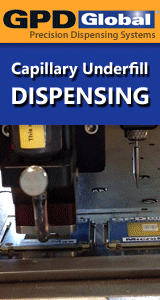Printed Circuit Board Assembly & PCB Design Forum
SMT electronics assembly manufacturing forum.
- SMTnet
- »
- Electronics Forum
- »
- Non-wetting on 0402 chips capacitors
Non-wetting on 0402 chips capacitors
![]() Hi..
Recently, I have received a few reels of 0402 with a...
- May 09, 2001
by
zam_bri
Hi..
Recently, I have received a few reels of 0402 with a...
- May 09, 2001
by
zam_bri
![]()
![]()
![]() Your process needs some refining.
How long did it take to ...
- May 09, 2001
by
CAL
Your process needs some refining.
How long did it take to ...
- May 09, 2001
by
CAL
![]()
![]()
![]() Awww, don beso tuff on ursef!!!
It sounds like you�re thi...
- May 09, 2001
by
davef
Awww, don beso tuff on ursef!!!
It sounds like you�re thi...
- May 09, 2001
by
davef
![]()
![]()
![]() Hi Cal/Dave F,
Good news today. The problem went away wh...
- May 10, 2001
by
zam_bri
Hi Cal/Dave F,
Good news today. The problem went away wh...
- May 10, 2001
by
zam_bri
![]()
![]()
![]() It depends ...
* Components stored in a garage in Chiriqui,...
- May 10, 2001
by
davef
It depends ...
* Components stored in a garage in Chiriqui,...
- May 10, 2001
by
davef
![]()
zam_bri
- SMTnet
- »
- Electronics Forum
- »
- Non-wetting on 0402 chips capacitors







.gif)